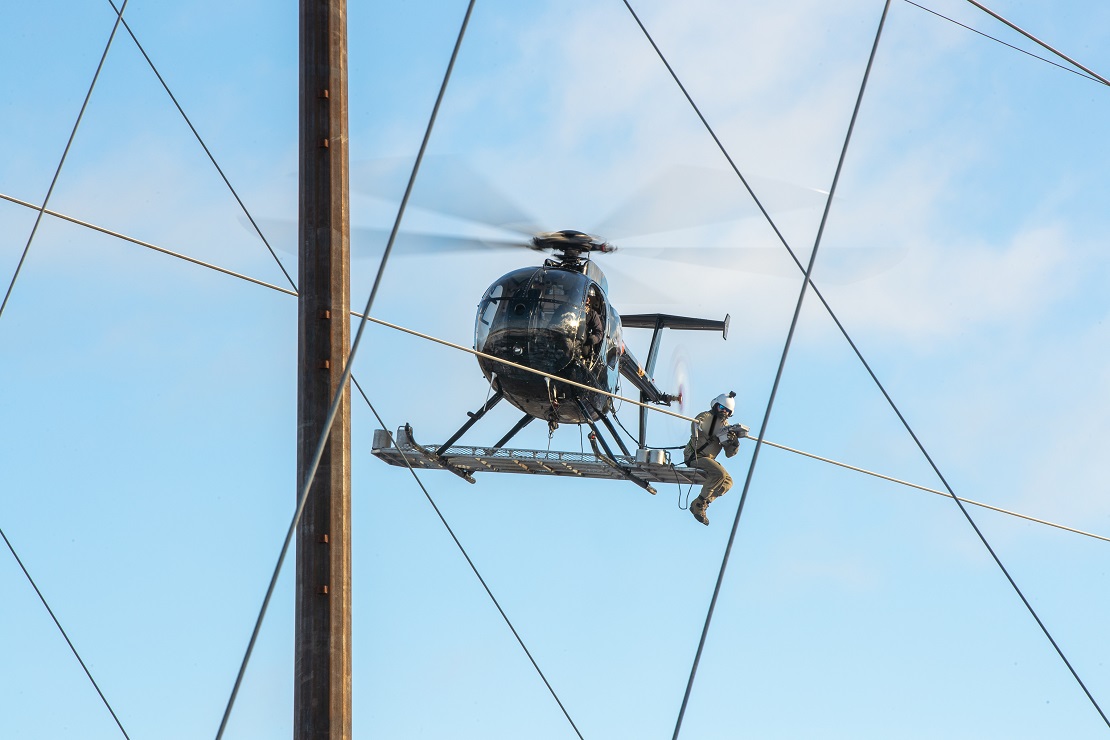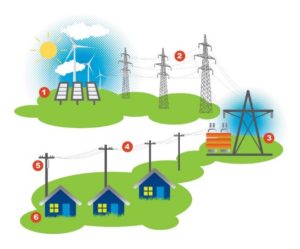We’re using technological innovation and data to reduce costs, improve safety, and keep the lights on for our customers.
This past winter we piloted dynamic line rating (DLR) technology on two of our transmission lines. When integrated successfully into operations, this technology has the potential to delay costly investments.
We’re excited to report that our pilot was successful. Thanks to the accuracy reported by our DLR sensors, we didn’t need to build new lines or upgrade the transmission line to avoid congestion.
The use of DLR sensors on our transmission lines saved millions of dollars that can be invested into preparing for the grid of the future. It also prevents us from having to do construction work.
Our company is one of the first to successfully integrate this technology into operations.
Let’s take a closer look at how it works.
The energy grid moves electricity like the roadway system moves vehicles. The grid has two main components. The transmission system (#2) acts like the highway, moving energy over long distances and across state lines. The distribution system (#4) acts like local roadways, delivering energy directly to homes and businesses.
Like traffic on the highway, the grid becomes congested when the transmission system can no longer deliver the electricity without exceeding certain limits. When this happens, just like roads need to be expanded or added, transmission owners, like us, must upgrade or build new electrical lines.
DLR sensors give real-time information on conditions that affect transmission line performance – like wind speed and line temperature. This information is used to increase the amount of electricity delivered over existing lines and decrease congestion.
Traditionally, static line ratings are taken when the lines are initially built, and the ratings are used indefinitely to make investment decisions. So, even though the environmental factors are continually changing, the rating assumes the most conservative factors are at play. When the grid becomes congested, we may be unable to increase the amount of electricity because the initial static line rating assumes we cannot. This means we must invest in upgrading or adding transmission lines.
“The information we are collecting is helping us better balance strong resiliency while holding down costs,” said Dave Quier, vice president of Transmission and Substation. “Not having to make upgrades to Harwood-Susquehanna saves money, avoids construction work and gives our team more flexibility to invest money where customers will see bigger reliability results.”
This is just another example of how we’re using technology, innovation and data to improve safety, reduce cost, and keep the lights on for you.




I am a PPL Electric Utilities customer. I live in a private housing community in the City of Bethlehem, PA. I am interested in knowing whose responsibility is it if there is concern that there are possible bare wires that are connected to some residential units that could be a safety issue. Is PPL Electric Utilities responsible for investigating and repairing/replacing bad wires?
Good Afternoon Marie, Please call our Service Team weekdays between 8am-5pm @ 1-877-220-6016. The Representative will take your information and issue an Investigation Order. Thank you!
Hello, Is there any place you show photos of different items we see on the wires that explain what these things are? I wonder if any of them are the DLR sensors. Observing the wires while stuck in traffic jams I get curious what all the odd things hanging In the wires are.
Thank you for your time. A PPL Customer fascinated by your wires!
Good Evening Carolyn, We currently do not have photos online of the DLR sensors. You can certainly read more and review sketches of wire structures & designs under https://www.pplelectric.com/remsi. (Rules for Electric Meter & Service Installations) Thank you for question!